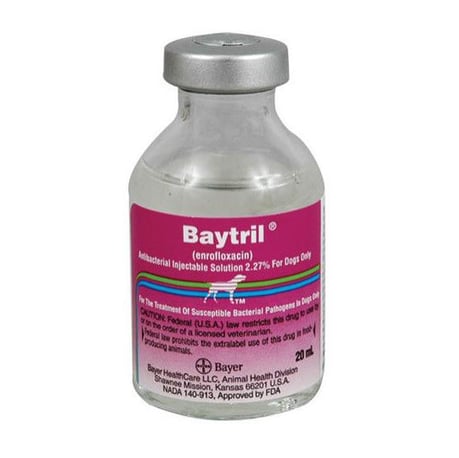The VTNE will have several questions for which you will need to perform calculations. We will be having several blog posts on how to do different types of calculations. It is good review for in-clinic use as well as studying for the VTNE. Here is a quick review of how to calculate a dose of injectable medication. We want you to know how to calculate pet drug dosage.

"Sparky" is a 5-year old male neutered Corgi mix and is currently in the hospital. He weighs 32 pounds. The doctor asks you to give Sparky 5 mg/kg of Baytril injectable antibiotic IV over 20 minutes. How much Baytril (in milliliters) will you give Sparky? The bottle says that Baytril is a 2.27% solution.

Drug dosages are calculated according to body weight in kilograms and concentration of a drug (mg/mL or mg/tablet).
- Figure the dog's body weight in kilograms. There are 2.2 pounds in 1 kg. If the dog is 32 pounds, then divide 32 by 2.2 pounds to get 14.5 kg
- If you are giving an antibiotic injection and the dose is 5 mg/kg, you will want to multiply the dose 5 mg/kg X 14.5 kg (the kg cancel out) to give you 72.5 mg total dose for the patient.
- Now, you also need to know how many mg are in 1 mL of the antibiotic solution so you can give the right dose of medication. Note that this medication gives you a percent concentration, so you will have to convert this percent into milligrams per milliliter (mg/mL). Use this formula for these types of questions: "mg/ml=%X10". Using this formula, multiply the percentage by 10. So 2.27% X 10 = 22.7 mg/mL. Side note- (if the percent concentration was 5% it would be 50mg/mL, if it was 10% it would be 100mg/mL, and so on.)
- If the solution is 22.7 mg/mL, how many mLs will you give your patient? Take your 72.5 mg total dose needed divided by the strength of 22.7 mg/mL (mg cancel out) and you get 3.2 mLs.
You will give your patient 3.2 mLs (the equivalent of 72.5 mg) of a 22.7 mg/mL Baytril solution IV over 20 minutes. Always double check your dose before administering to the patient.
Check the bottle, the syringe, the patient's chart, and that you have the correct patient. I know this seems obvious but is very important. Another thing to do is label the syringe when medication is drawn up so there are no mix-ups.
Want more calculation posts? Check out how to calculate a drip rate.
The Top 15 Tips and Tricks for Studying for the VTNE
 You're of course going to need to study a ton to nail the test, but there are a lot of tips and tricks that will help you make the most of your study time and we've packaged those up in a free guide. You're of course going to need to study a ton to nail the test, but there are a lot of tips and tricks that will help you make the most of your study time and we've packaged those up in a free guide.
Some of the Top 15 Tips include:
- Familiarize Yourself with the Test Format
- Tackle the Weak Subjects Early
- Start Sooner and Ease Into It
- ...and 12 more!
Download Now!
|




 You're of course going to need to study a ton to nail the test, but there are a lot of tips and tricks that will help you make the most of your study time and we've packaged those up in a
You're of course going to need to study a ton to nail the test, but there are a lot of tips and tricks that will help you make the most of your study time and we've packaged those up in a